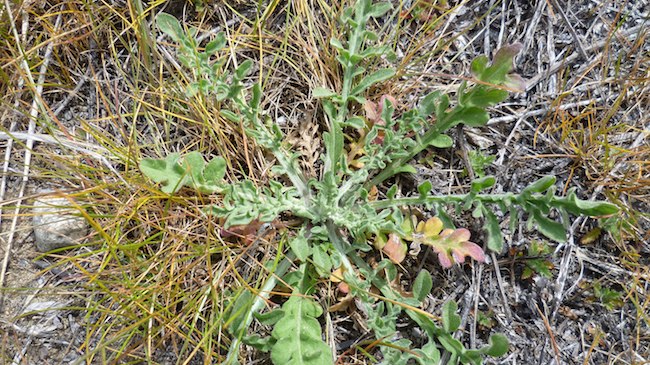By Blaine Bug Crew
Life is full of dilemmas. Noxious weeds in Idaho are just another dilemma we need to deal with. Many ask, what is the best way to take care of a noxious weed infestation. Some choose to till the weeds, others use sprays, many pull the weeds, while some turn to biological control. Dealing with a diffuse knapweed dilemma in Idaho requires a multifaceted approach. No matter how you choose to deal with this noxious invader, it’s important to understand the characteristics of this weed.
Diffuse knapweed is a biennial, or short-lived, perennial reproducing entirely by seed and producing up to 18,000 seeds per plant. Flowers occur singly or in clusters, bloom from July to September, and may be white, pink or lavender. The bracts of the flowerheads are tipped with a long, slender spine fringed with smaller spines. Seeds are blackish-brown with vertical brown and gray stripes and about 0.1 inch long. Stems are typically 6 inches to 2 feet tall with deeply divided leaves.
Diffuse knapweed prefers well-drained, light-textured soils and is intolerant of shade. This plant is common along roadsides and at disturbed sites. Biological control agents have been approved for release for the knapweed complex, which includes diffuse knapweed. If you’re interested in biological control, we have an insect predator that eats diffuse knapweed.
Larinus minutus are abundant biological control agents that can utilize spotted, diffuse and squarrose knapweed. Larinus minutus overwinter as adults, which emerge in the spring when they begin to feed on knapweed foliage. Females produce between 28 and 130 eggs, which they lay in clusters in open flowers. Eggs hatch into larvae, which feed on seeds and receptacle tissue for about a month. Larvae construct cocoons within the seed heads using pappus hairs and pupate. Emerging adults chew a characteristic round hole in the top of the cocoon that is visible when viewed from above.
As you can see, this insect is effective in reducing the vigor and density of diffuse knapweed. Whatever way you choose to solve the dilemma of your diffuse knapweed problem, we wish you luck. If you have any questions, please contact Morgan Baird at the Blaine County Weed Department at (208) 788-554, ext..1136. She will help to answer any of your questions.



